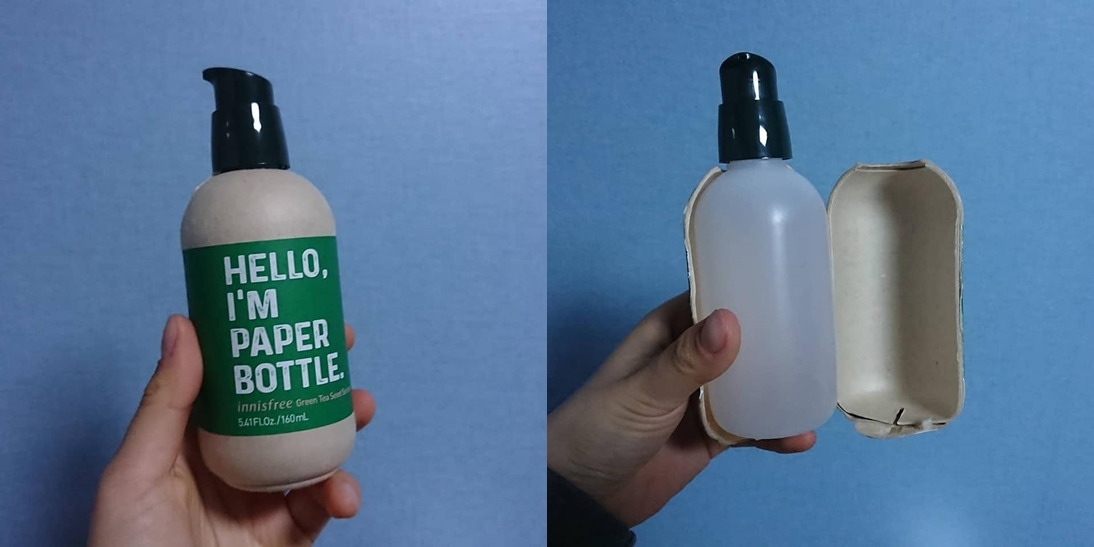“All-natural, clean beauty, earth-friendly…” there are lots of terms that are used to sell “sustainable beauty products” but how do we make sure that we avoid beauty greenwashing? And can cut through the marketing jargon to find the truly sustainable and safe self-care products? Let’s explore.
Self-care has become more popular than ever in recent years. So much so that some people consider it something of a marketing “buzzword.” However, self-care isn’t a luxury, it’s a necessity. While self-care looks different for everyone, many people enjoy taking care of their minds and bodies by using certain products. Whether it’s spa-like treatments, skin care products, or even healthy food, it’s easy to de-stress and find ways to relax when you find brands and products that make you feel your best.
However, it’s important to make sure the self-care products you’re using aren’t misleading you and you’re not falling into the beauty greenwashing trap. Greenwashing is the practice of companies claiming or implying their products are environmentally friendly when they’re not. It’s not uncommon for greenwashed products to “look” environmentally sound, and that’s by design. From the packaging to terms used in their marketing, companies go to great lengths to make certain products look like they’re better for you and the planet when they can actually be quite harmful.
If you’re trying to spot greenwashing, watch out for vague terms like “sustainable” or “natural.” These can have many meanings. Some companies use greenwashing, such as hotels asking guests to reuse their linens, to distract from unsustainable initiatives such as expansion into natural habitats or the use of carbon-emitting materials.
If you’re trying to live a more sustainable lifestyle, that can be a hard pill to swallow. While greenwashing is unethical, it’s not illegal, and most companies know how to get away with it while fooling plenty of consumers in the process.
So, what can you do to avoid greenwashing in your self-care products? How can you continue to find moments of rest and relaxation while feeling good about the products you use? Let’s cover a few helpful tips that can make you a more conscious consumer.
Recognize the Common Signs
Most companies go to great lengths to market their products effectively. When a brand wants to greenwash a product, they’ll utilize trends that work for actual eco-friendly items. For example, more than half of consumers consider sustainable packaging when choosing a product. A company focused on greenwashing might not use sustainable packaging, but they can make their product look like it.
That can be done through practices like using “natural” colours, including brown, green, and other earth tones. They might also use certain phrases like:
- All-natural
- Clean
- Earth-friendly
- Natural products
- Non-toxic
When the average consumer sees a label that looks like it could be recycled or biodegradable, combined with such “green” terminology, it’s easy to assume you’re choosing a product that is safe for the environment. Take, for instance, the cosmetics brand Innisfree. It was forced to acknowledge greenwashing practices when a customer cut opens a bottle labelled as paper and found said bottle to be plastic wrapped in paper.

Unfortunately, many people are just falling for a clever marketing design and common buzzwords. Make sure you don’t fall into that trap by recognizing some of these signs, and questioning everything before you decide to make a purchase.
Learn to Read Labels
If you have a self-care product you’ve been using for a long time, what do you really know about it? Have you ever taken the time to turn over that bottle of face wash you love to read the ingredients? What about the bath bombs you use for at-home spa days?
Unfortunately, you might find a harsh reality when you start to look at the labels of these products. It’s often easy to assume that products designed for cleansing or wellness are good for the planet, too, but that isn’t always the case.
That’s why it’s important to know how to read labels, and to understand a few basic ingredients that you should avoid. You might be surprised to find that some of your regularly-used products contain harmful chemicals that could affect your health through inhalation, digestion, or even skin contact. Some of the worst contaminants often found in beauty and skincare products include:
- Formaldehyde
- Mercury
- Quaternium 15
- Triclosan
On the other hand, you can also take the time to learn about active ingredients that provide benefits, like:
- BHAs — combat acne and oily skin, exfoliation of dead skin
- AHAs — exfoliation, reduces visible sun damage, moisturizes, reduces signs of ageing
- Hyaluronic acid — speeds wound healing, reduces signs of ageing, moisturizes, relieves joint pai
Companies that try to “hide” their ingredients in the fine print are likely more interested in selling you the idea of a green product, rather than something sustainable. If you take a look at the current items you use regularly, you might find that it’s time to make a change based on what’s being used to make them. If you have any questions about what a specific ingredient does or how it might be harming the planet, don’t hesitate to look it up. The more informed you are, the better.
Research Brands and Businesses
As consumers across the globe become more environmentally conscious, brands and businesses have started to take note. Some businesses have taken great strides to reduce their carbon footprint and focus on sustainability.
Small and mid-sized businesses across the globe are leading the way to transparent and sustainable production and distribution. Brands like Codex Beauty, Beast, HARA the label, and Girlfriend Collective are just a few examples of businesses prioritizing sustainable materials, packaging, shipping, and labour practices. If a company is truly proud of what they’re doing to cut down on its carbon footprint, they’re going to be eager to share. It’s great publicity and can be used in a variety of marketing techniques.
Even larger corporations like Crocs, Inc. have made strides when it comes to the active changes they’ve made to their practices. The corporation, which makes everyone’s favourite squishy pandemic shoe, was 25th on Barron’s 100 Most Sustainable Companies of 2021. The company’s commitment to going carbon neutral by 2030 has been in effect long enough that each pair of shoes has a carbon footprint of less than 3 kg CO2 eq. per pair. They also donate shoes to communities all over the world and promote diversity in their organization and the world.
So, if you pick up a self-care product that comes in a pretty green bottle and claims to be “earth-friendly,” consider researching the company before you make your purchase.
Look at their website and social media. Read reviews from others who may have bought into their greenwashing efforts. If you can’t find any information about their sustainability efforts, you’ll know they’re trying to make you believe a lie. Message them if you can’t find enough information and see what they are able to share with you.
Taking the time to research different brands can also inform you about businesses you may not have heard of before. You can discover companies who are doing things the right way, and those who actually care about the planet. Doing your research can help you to avoid the greenwashers and introduce you to businesses that practice what they preach.
How to Ensure You’re Getting Truly Green Self-Care Products
All of the tips listed here can help you avoid greenwashing techniques. However, if you’re truly interested in sustainable self-care and clean beauty, it’s just as important to feel confident in the legitimately green products you choose.
It all starts with research. Look for reputable environmentally-friendly companies and see what others are saying about their products and their efforts. Try to avoid the natural instinct to fall for pretty packaging, and focus on reading ingredients and manufacturing practices instead.
You might also consider DIYing some of your favourite self-care products, including:
- Homemade soaps
- Face masks
- Body scrubs
- Aromatherapy candles
You can create a lot of relaxing items using all-natural ingredients. It can take a bit of time and effort, but it’s often more cost-effective, and you’ll know every ingredient that goes into each thing.
As sustainability becomes more important to consumers, beauty greenwashing will continue to be a problem. It will likely even get worse since so many people tend to fall for a few clever phrases and earthy colours. However, you can do your part to stop the popularity of greenwashed products while committing yourself to sustainable self-care. By recognizing some of the common signs, knowing how to read labels, and studying up on brands truly making their mark on the environment, you’ll feel more confident the next time you go shopping for self-care products. What’s more relaxing and freeing than that?


